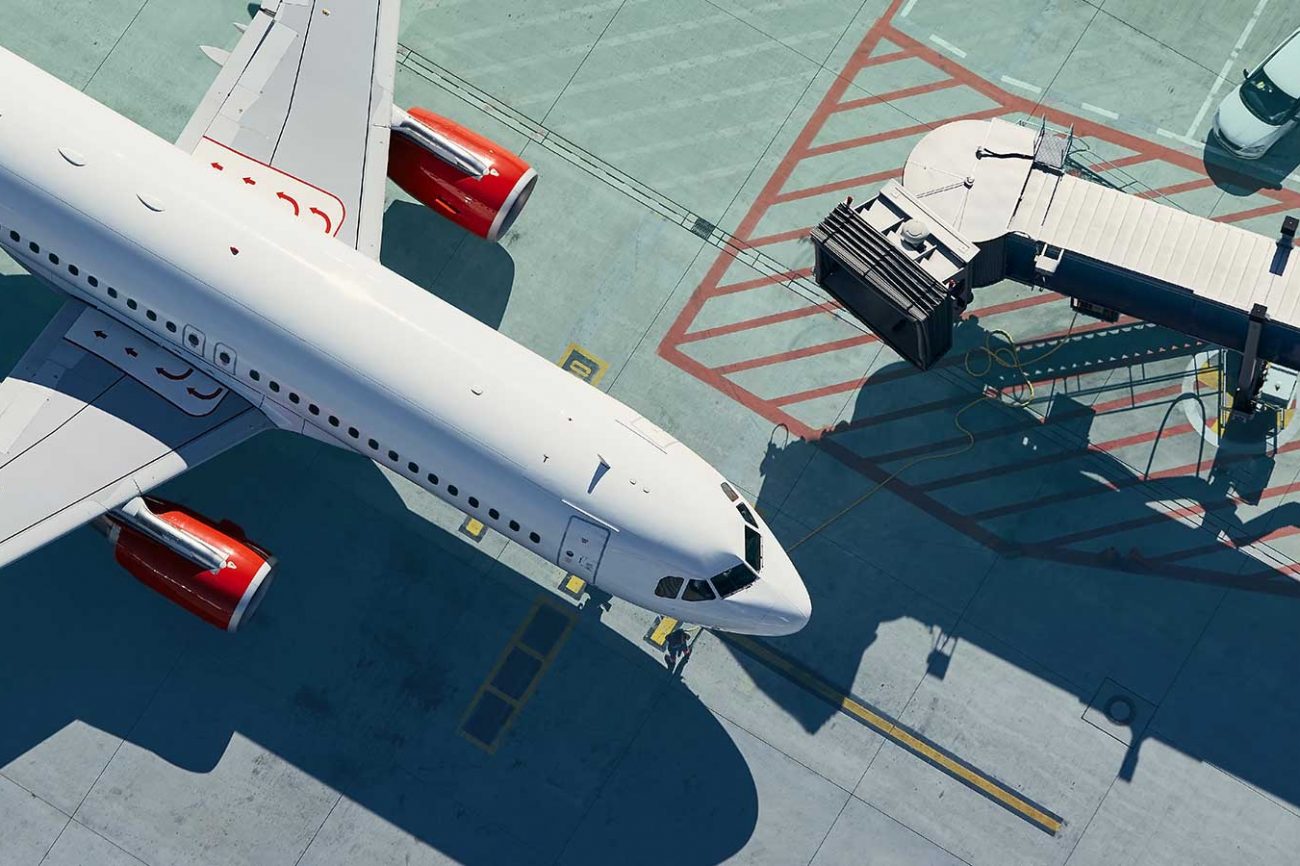[vc_row][vc_column][vc_column_text]
Hit the High Arrivals ASQ Scores with Airport-wide Flow Management
[/vc_column_text][vc_single_image image=”5211″ img_size=”full”][/vc_column][/vc_row][vc_row full_width=”stretch_row” bg_type=”image” parallax_style=”vcpb-default” css=”.vc_custom_1567163833988{background-position: center !important;background-repeat: no-repeat !important;background-size: cover !important;}”][vc_column width=”2/3″][vc_column_text]
By Siobhan Boyle, Product Marketing
[/vc_column_text][vc_separator][vc_column_text]What defines a great arrival experience? Given that passengers are usually in transit to somewhere else, top of the arrivals desirability list is the ability to get out, fast. Whether travellers are tired, rushed for a meeting or eager to meet friends and family, they all want to complete their journey as quickly and smoothly as possible.
In competing for customers, airlines and the spending dollar, airports have tended to focus on smoothing the departure – creating an environment where passengers can quickly move airside to shop and relax, arrive stress-free at the gate and take off on time. However, a passenger’s arrival has just as much impact on an airport’s reputation as their departure. Indeed, with our memories heavily weighted towards the more intensive points of an experience and how the experience ended (the Peak-End rule), a poor arrival process will shape how we recall the entire journey.
To get a sense of how well airports were doing on the arrivals front, in 2019 Airports Council International, the world governing body for airports, launched the Airport Arrival Airport Service Quality (ASQ) awards. Passengers are surveyed as they arrive at the airport destination and asked about their experience going through the arrivals process, immigration and baggage collection as well as walk times, information clarity and the helpfulness of the staff.
Airports eager to boost their customer experience ranking are seeking to improve their understanding of how the passenger moves throughout the arrivals terminal. Several operators are now combining passenger flow insight with flight and baggage data so they can make robust plans and predict changes early enough to improve the arrivals experience.
Here’s how they’re doing it – from one arrivals process to the next.[/vc_column_text][vc_column_text]
Immigration and customs
Passenger flow management and forecasting can also be used to improve the resource capacity planning of immigration and customs checkpoints. Understanding movement per flight helps build a picture of the show-up profiles at transfer, border and security control. Combining flow predictions with real-time flight data can help airports understand the implication of any changes to the flight schedule, and take action to mitigate the impact.
For example, due to late departures, an airport might forecast that several long-haul flights are predicted to land at the same time. By combining flight information with flow models, operators can forecast that the immigration arrivals hall occupancy threshold will be exceeded, with long queues expected. With this look-ahead intelligence, they can take the best action to streamline operations. In this case, for example, reallocating early arrivals to more remote gates to increase walk time to immigration, or making adjustments to rostering based on forecast recommendations, well in advance of the new shift starting.[/vc_column_text][vc_column_text]
Baggage
After a long flight, the last thing passengers want is to wait for their luggage. While this is a relatively straight forward step in the process, it has the potential to severely impact on the overall customer arrivals experience.
By combining gate-to-baggage-hall passenger flow insight with first-bag-last-bag data and flight information, Keflavik Airport can now collate baggage wait times by flight. This will allow them to prioritise baggage handling for more efficient ground handling and improved customer satisfaction during construction, at times when there are fewer reclaim belts. It also enables them to validate forecasting data by comparing actual data to the forecasting model.[/vc_column_text][vc_single_image image=”5256″ img_size=”full” onclick=”img_link_large”][vc_column_text]
Transfers
Although the airport is not a destination as such, how transferring passengers move from arrival to connecting with their ongoing flight, has a significant impact on the overall experience. With travellers now actively choosing flights based on the transit hub, a smooth connection process is essential.
At Brussels Airport, 18% of all travellers go through the transfer process. Understanding passenger flow is proving a reliable tool in improving the transfer experience. By meshing wait times at security screening and border control with flight and transfer passenger data from the airlines, Brussels Airport can accurately predict how long a transfer journey will take.
Airport staff are then able to make informed decisions about what actions are needed to ensure tight connections are made or informing airlines ahead of flight landing that a connection is unlikely to happen. [/vc_column_text][vc_column_text]
Road transport
Finally, the traveller is ready to hail a taxi. Flow management technology can provide real-time data to identify taxi shortages and bottlenecks and even minimise traffic. In New York, for instance, airports use it to balance terminal rideshare availability, directing taxis to pick-up points when they are needed.
[/vc_column_text][vc_column_text]
Take a holistic view for a winning ASQ score
Airports are keen to increase their ASQ customer experience rating in both departures and arrivals. But to do so, they must achieve a birds-eye view of all airport processes. With cohesive movement insights, from flow management technology, scores can improve for every process area, rather than tackling one process but pushing a problem to the next.
Passenger flow data layered with flight and baggage data yields the best insights for better customer service decisions – and a better ASQ arrivals score.[/vc_column_text][/vc_column][vc_column width=”1/12″][/vc_column][vc_column width=”1/4″][vc_widget_sidebar show_bg=”false” sidebar_id=”sidebar_1″][vc_row_inner gap=”5″ css=”.vc_custom_1568209076572{padding-right: 15px !important;padding-left: 15px !important;}”][vc_column_inner css=”.vc_custom_1568208991171{margin: 0px !important;border-width: 0px !important;padding: 0px !important;}”][vc_single_image image=”8164″ img_size=”full” alignment=”center” css_animation=”top-to-bottom” el_id=”open-newsletter-popup”][/vc_column_inner][/vc_row_inner]
[/vc_column][/vc_row][vc_row full_width=”stretch_row” bg_type=”bg_color” bg_override=”full” seperator_enable=”seperator_enable_value” seperator_type=”tilt_right_seperator” seperator_svg_height=”220″ seperator_shape_background=”#ffffff” bg_color_value=”rgba(42,210,201,0.05)” css=”.vc_custom_1519271452847{margin-top: 50px !important;padding-bottom: 100px !important;}”][vc_column][dt_testimonials_carousel dis_posts_total=”10″ content_layout=”layout_1″ content_alignment=”center” content_bg=”n” post_content_paddings=”30px 50px 20px 50px” img_max_width=”120px” img_border_radius=”500px” slides_on_wide_desk=”1″ slides_on_desk=”1″ autoplay=”y” post_title_font_size=”40px” post_title_line_height=”32px” post_title_bottom_margin=”5px” testimonial_position_font_size=”24px” testimonial_position_line_height=”28px” testimonial_position_color=”#2ad2c9″ post_content=”show_content” content_font_size=”17px” content_line_height=”27px” custom_content_color=”#253746″ content_bottom_margin=”0px” arrow_bg_width=”36x” arrow_border_width=”0px” arrow_bg_color=”#2ad2c9″ arrow_bg_color_hover=”#2fa8a1″ r_arrow_icon_paddings=”0px 0px 0px 0px” r_arrow_v_offset=”0px” l_arrow_icon_paddings=”0px 0px 0px 0px” l_arrow_v_offset=”0px” category=”10″ css_dt_testimonials_carousel=”.vc_custom_1563263131577{margin-top: 0px !important;background-position: center !important;background-repeat: no-repeat !important;background-size: contain !important;}”][/vc_column][/vc_row][vc_row full_width=”stretch_row” css=”.vc_custom_1567166018747{background-image: url(https://veovoforum.wpengine.com/wp-content/uploads/2018/12/veovo_homepage_background.jpg?id=2972) !important;}”][vc_column css=”.vc_custom_1567166044803{margin-top: 100px !important;margin-bottom: 100px !important;}”][vc_custom_heading text=”Plan. Predict. Perfect” font_container=”tag:h1|text_align:center|color:%23ffffff” use_theme_fonts=”yes” css_animation=”fadeIn”][/vc_column][/vc_row]



